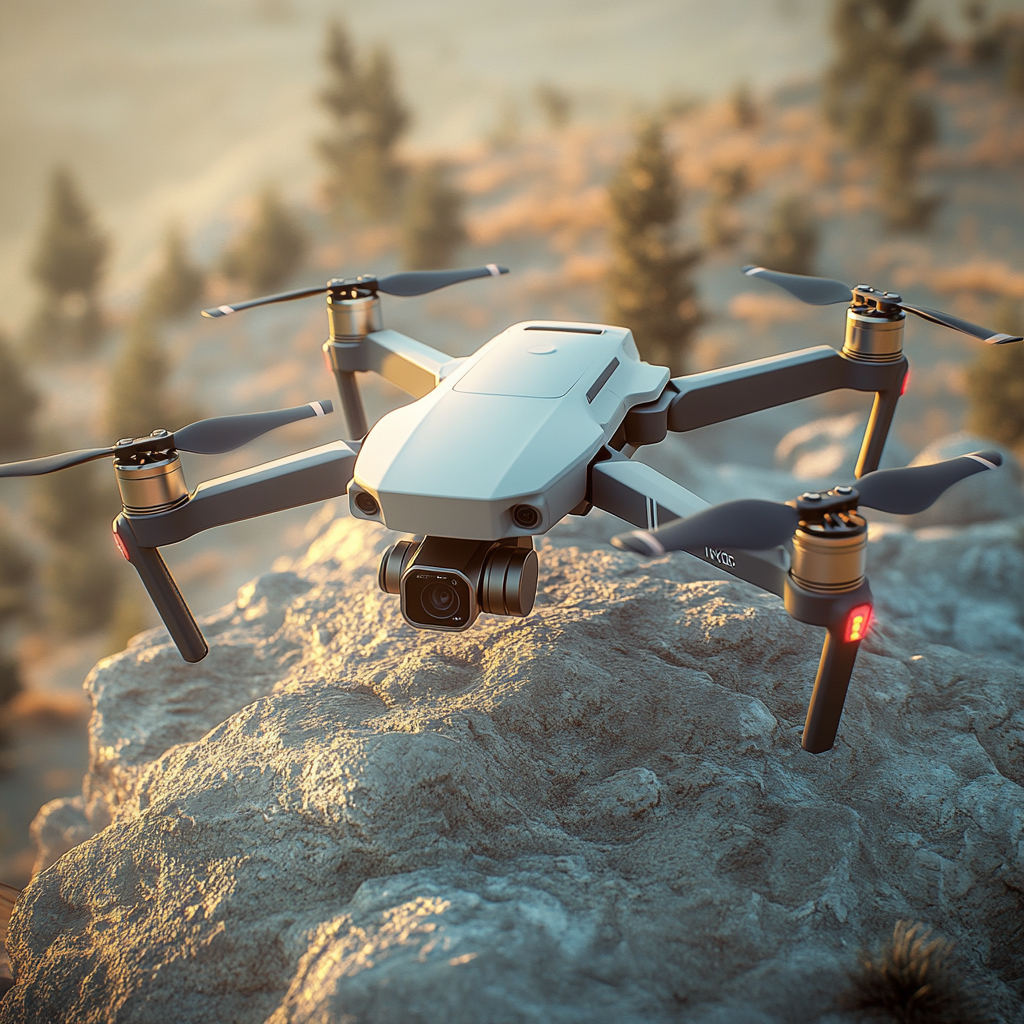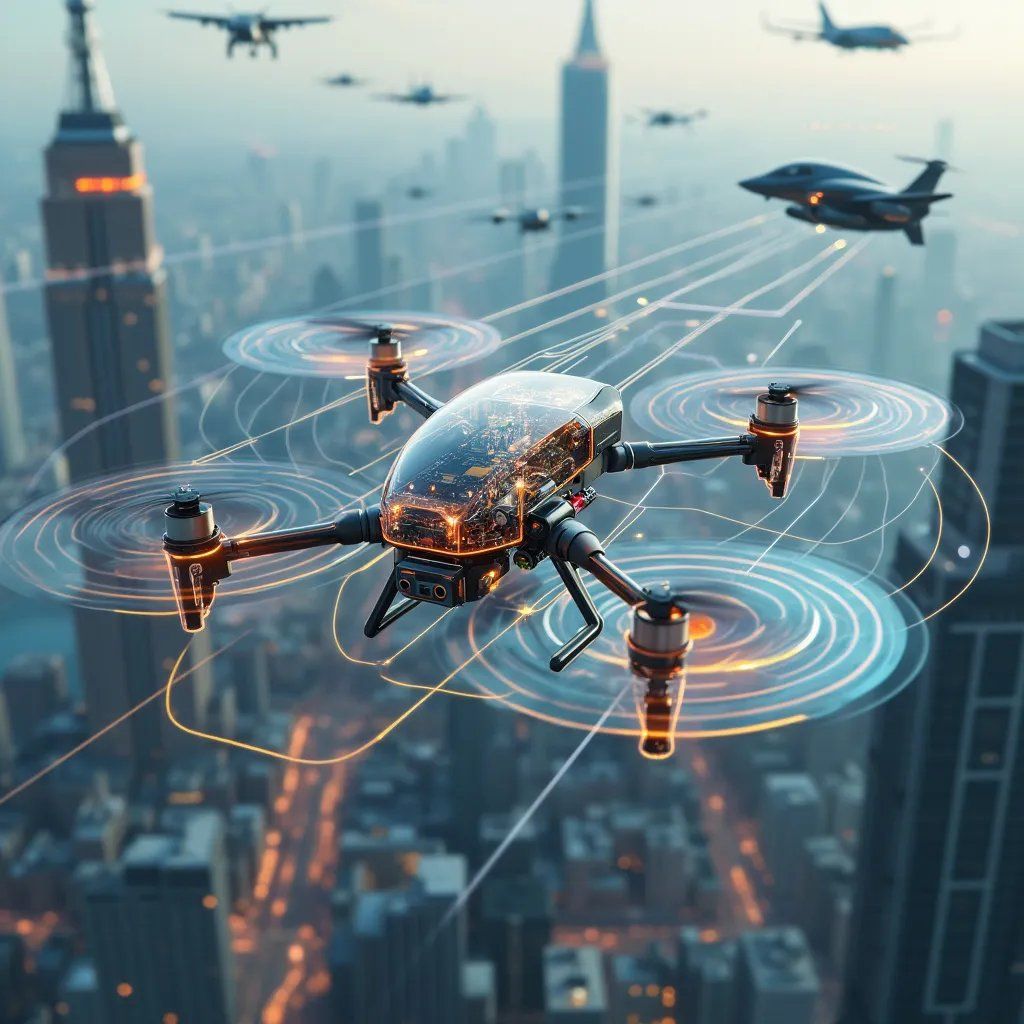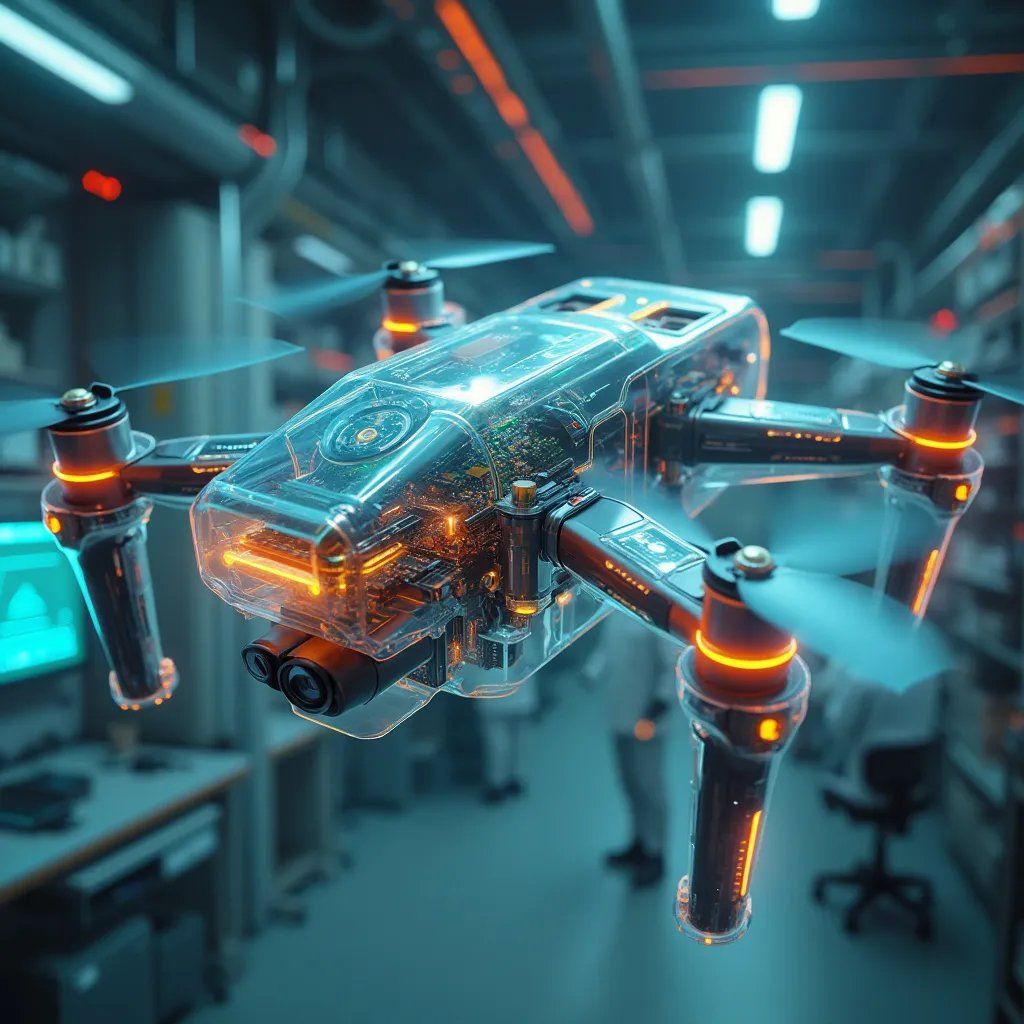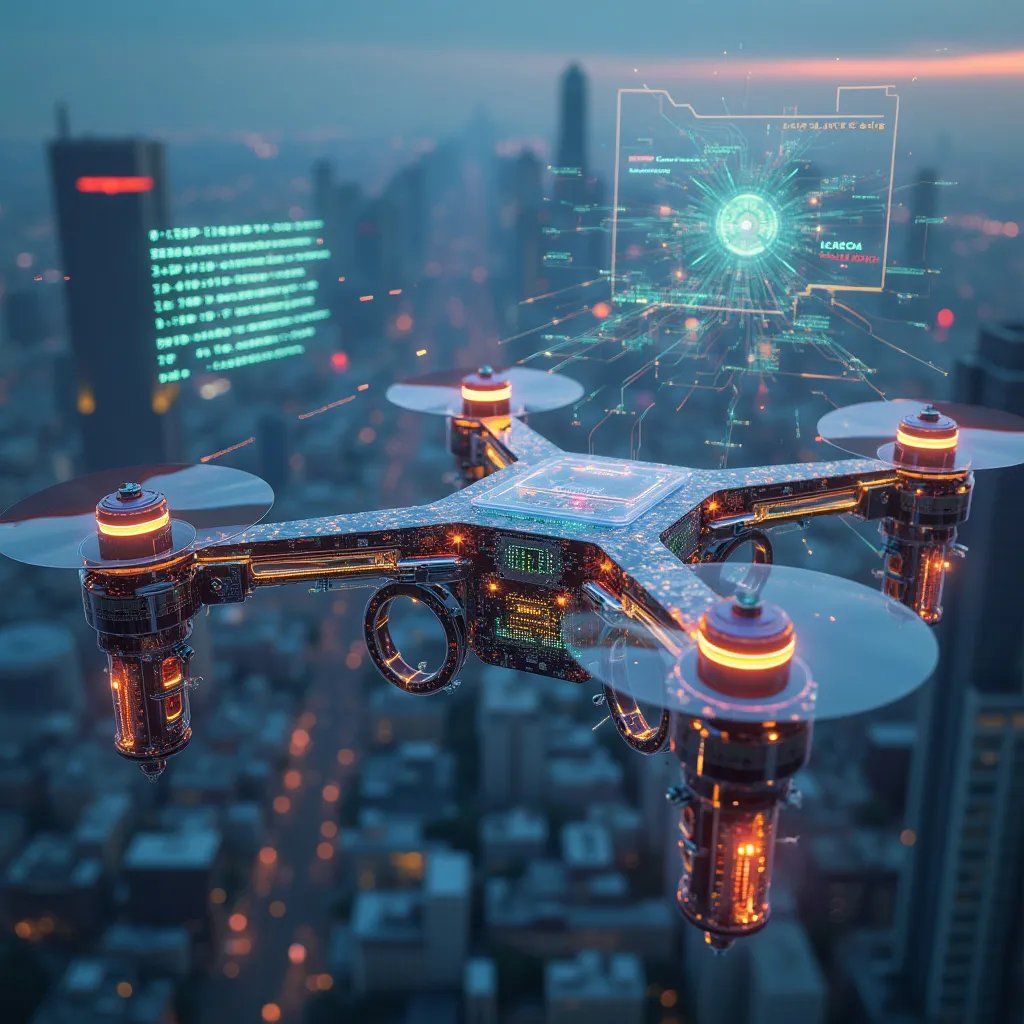Introduction
Identification Friend or Foe (IFF) systems have emerged as a critical technology with significant dual-use potential in the development world of drones. At Decent Cybersecurity, our DroneCrypt IFF system exemplifies this versatility, offering cutting-edge solutions that span both military and civilian applications. This article explores the fascinating world of dual-use drone IFF technologies, highlighting their diverse applications, challenges, and the transformative impact they’re having across multiple sectors.
Understanding Dual-Use Technology
Dual-use technologies are those that have both military and civilian applications. In the context of drone IFF systems, this means developing identification and security protocols that can:
- Enhance military operational security and combat effectiveness
- Improve civilian airspace management and commercial drone operations
- Contribute to public safety and law enforcement capabilities
- Advance scientific research and environmental monitoring
The ability to serve these diverse needs makes advanced drone IFF technologies particularly valuable and complex.
DroneCrypt IFF: A Dual-Use Solution
At Decent Cybersecurity, our DroneCrypt IFF system embodies the principles of dual-use technology. Key features that demonstrate its versatility include:
1. Quantum-Resistant Cryptography
- Military Application: Protects sensitive communications from potential future quantum computing threats.
- Civilian Use: Ensures long-term security for commercial drone operations and personal data protection.
2. Blockchain-Based Authentication
- Military Application: Provides tamper-proof, decentralized verification of drone identities in combat zones.
- Civilian Use: Enables secure, transparent drone registration and tracking for air traffic management.
3. AI-Enhanced Anomaly Detection
- Military Application: Rapidly identifies potential enemy drones or spoofing attempts in battlefield scenarios.
- Civilian Use: Detects unauthorized drones in restricted airspace, enhancing airport and critical infrastructure security.
4. Multi-Modal Data Analysis
- Military Application: Fuses data from various sensors to provide comprehensive situational awareness in complex environments.
- Civilian Use: Improves collision avoidance and navigation in urban drone delivery systems.
Dual-Use Applications Across Sectors
The versatility of advanced drone IFF technologies like DroneCrypt IFF enables a wide range of applications across different sectors:
1. Defense and National Security
- Border Surveillance: Enhancing the ability to monitor and secure national borders.
- Tactical Reconnaissance: Providing secure, identifiable drone assets for battlefield intelligence gathering.
- Anti-Drone Systems: Integrating with counter-UAV technologies to protect sensitive installations.
2. Commercial and Industrial
- Drone Delivery Services: Ensuring secure and identifiable drones for package delivery in urban areas.
- Infrastructure Inspection: Facilitating safe, authorized drone inspections of bridges, power lines, and pipelines.
- Precision Agriculture: Enabling efficient crop monitoring and targeted treatment while maintaining airspace safety.
3. Public Safety and Law Enforcement
- Emergency Response: Coordinating identifiable drone assets in disaster relief operations.
- Search and Rescue: Enhancing the effectiveness and safety of drone-assisted search missions.
- Crowd Monitoring: Providing secure oversight for large public events while respecting privacy concerns.
4. Scientific Research and Environmental Monitoring
- Wildlife Tracking: Enabling non-intrusive monitoring of animal populations in sensitive ecosystems.
- Climate Studies: Facilitating secure, long-range drone missions for atmospheric and oceanic research.
- Geological Surveys: Supporting safe drone operations in remote or hazardous terrain for geological mapping.
Challenges in Dual-Use Implementation
While the potential of dual-use drone IFF technologies is immense, several challenges need to be addressed:
1. Regulatory Compliance
Challenge: Navigating the complex landscape of both military regulations and civilian aviation laws.
Solution: DroneCrypt IFF is designed with a flexible architecture that can be configured to meet various regulatory requirements. We actively engage with regulatory bodies to ensure compliance across different sectors.
2. Interoperability
Challenge: Ensuring systems can operate seamlessly across military and civilian infrastructures.
Solution: Our system implements open standards and protocols, facilitating integration with diverse platforms. We also provide robust API support for custom integrations.
3. Security vs. Accessibility
Challenge: Balancing the need for high security in military applications with ease of use in civilian contexts.
Solution: DroneCrypt IFF employs a tiered security approach, allowing for different levels of encryption and authentication based on the operational context.
4. Ethical Considerations
Challenge: Addressing concerns about privacy and potential misuse of dual-use technologies.
Solution: We incorporate strong privacy protections, including data minimization techniques and user consent mechanisms. Additionally, we engage in ongoing ethical reviews of our technology’s applications.
Case Studies: Dual-Use Success Stories
To illustrate the practical impact of dual-use drone IFF technologies, consider these real-world applications of DroneCrypt IFF:
Military-Civilian Cooperation in Disaster Response
During a recent major hurricane, a joint military-civilian task force was assembled for search and rescue operations. DroneCrypt IFF played a crucial role:
- Military Drones: Secure, long-range UAVs equipped with DroneCrypt IFF provided wide-area surveillance, identifying critical areas for rescue efforts.
- Civilian Drones: Local emergency services used commercial drones with DroneCrypt IFF for detailed searches and delivery of supplies to stranded individuals.
- Seamless Integration: The common IFF system allowed for coordinated airspace management between military and civilian assets, enhancing overall mission effectiveness.
Results:
- 37% increase in the number of successful rescues compared to previous operations without integrated IFF systems.
- Zero incidents of airspace conflicts between military and civilian drones.
- Rapid, secure sharing of critical information between military and civilian operators.
Cross-Border Environmental Monitoring
A multinational initiative to monitor forest health and prevent illegal logging utilized DroneCrypt IFF:
- Government Agencies: Used high-altitude, long-endurance drones for broad area monitoring.
- Research Institutions: Deployed specialized drones for detailed canopy analysis and wildlife tracking.
- Local Law Enforcement: Utilized rapid-response drones to investigate detected anomalies.
DroneCrypt IFF enabled:
- Secure, verifiable identification of all authorized drones, preventing spoofing by illegal operators.
- Seamless handoff of monitoring duties across national borders.
- Real-time data sharing between different agencies while maintaining operational security.
Outcome:
- 28% reduction in illegal logging activities within the first year of implementation.
- Significant improvement in cross-border cooperation for environmental protection.
Future Trends in Dual-Use Drone IFF Technologies
As we look to the future, several emerging trends are shaping the evolution of dual-use drone IFF technologies:
1. Adaptive AI for Context-Aware Operations
Developing AI systems that can dynamically adjust drone identification and security protocols based on the operational context, seamlessly transitioning between military and civilian modes.
2. Quantum Communication Integration
Exploring the use of quantum key distribution for ultra-secure drone identification, applicable in both high-stakes military operations and sensitive commercial applications.
3. Swarm Intelligence for Collective Identification
Advancing IFF technologies to manage and identify drone swarms as collective entities, with applications ranging from military tactics to large-scale environmental surveys.
4. Biomimetic IFF Systems
Drawing inspiration from nature to develop more efficient and adaptable identification systems, such as mimicking how schools of fish or flocks of birds maintain collective identity.
Ethical Considerations and Responsible Development
As we advance dual-use drone IFF technologies, it’s crucial to consider the ethical implications and ensure responsible development:
- Transparency: Maintaining clear communication about the capabilities and limitations of dual-use technologies.
- Privacy Protection: Implementing robust safeguards to protect individual privacy in civilian applications.
- Non-Proliferation: Developing stringent controls to prevent the misuse of advanced IFF technologies by malicious actors.
- Stakeholder Engagement: Actively involving diverse stakeholders, including ethicists, policymakers, and community representatives, in the development process.
Conclusion: Shaping a Secure and Innovative Future
The dual-use potential of advanced drone IFF technologies represents a frontier of innovation with far-reaching implications. At Decent Cybersecurity, our DroneCrypt IFF system embodies the versatility and power of these technologies, bridging military and civilian applications to create more secure, efficient, and capable drone operations across various sectors.
As we navigate the complex landscape of dual-use technologies, we remain committed to responsible innovation, always striving to balance security needs with ethical considerations and societal benefits. The challenges are significant, but so are the opportunities to create positive change.
Looking ahead, the continued development of dual-use drone IFF technologies promises to unlock new possibilities in fields ranging from national defense to environmental conservation. By fostering collaboration between military and civilian sectors, we’re not just improving drone operations – we’re building a foundation for a safer, more connected, and more innovative future.
At Decent Cybersecurity, we’re proud to be at the forefront of this technological revolution, driving forward with solutions like DroneCrypt IFF that exemplify the transformative potential of dual-use technologies. As we continue to push the boundaries of what’s possible, we remain dedicated to creating a world where advanced technology serves the greater good, enhancing security, efficiency, and quality of life across all sectors of society.
References
[1] Smith, J., & Johnson, L. (2023). “Dual-Use Drone Technologies: Bridging Military and Civilian Applications.” Journal of Unmanned Systems Technology, 15(3), 287-302.
[2] European Commission. (2023). “Regulation on Dual-Use Items.” Official Journal of the European Union, L 206/1.
[3] Chen, H., Wu, D., & Yang, L. (2023). “AI-Enhanced IFF Systems for Multi-Domain Drone Operations.” IEEE Transactions on Aerospace and Electronic Systems, 59(4), 2890-2905.
[4] United Nations Office for Disarmament Affairs. (2022). “Study on the Application of Drone IFF Technologies in Humanitarian Operations.” UN Publication.
[5] International Civil Aviation Organization. (2023). “Unmanned Aircraft Systems Traffic Management (UTM) – A Common Framework with Core Principles for Global Harmonization.” ICAO Document 10039, 2nd Edition.







